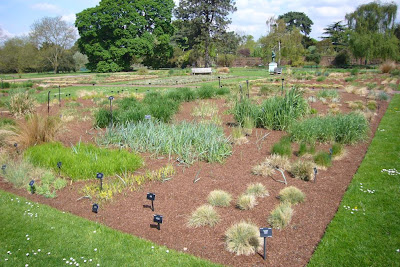In the mean time, all we can do is slowly clear the flower beds. Strangely the more we do the worse the garden looks. It seems even badly planted flower beds are better than empty ones. Normally this would mean no photos of the garden, but there are only so many post on pots you can do before you have to show what else is going on. Besides this is a much a record for us on how the garden develops over time, so this mucky middle stage should be recorded as well.
So remember the lovely feature wall?
You can see the grass besides it is mainly weeds. The wall has to go, so to look at the foundations and provide some space for pots, we dug a little trench along the far side. The grass/weeds were removed along with the stones, which were used on the surface to give something for pots to sit on.
It's no better is it. But on the plus side, it is perfect for the pots which get sun all day and are loving it. We ran out of stones to do the rest of that side, so will have to finish it later.
Next up was the secret garden, the optimistic name we have given the bit that you can't really get to behind the garage. This is it from the street.
Again nothing we can do here as the garage has to be pulled down, and may be moved into this patch. So just clearing the mess for now. It turns out this was a fruit garden at some point, we have left the raspberry and gooseberry bushes.
You can see how dry it is. The soil seems to be more stone than soil and despite the fence and wall it gets the sun a lot of the day, so has a bit of a micro-climate. The fruit bushes will be left to fruit while we find out how best to bring them back to full health. It seems a waste to just get rid of them; longer term we may be able to find space for them somewhere. It is amazing what you find in a part of the garden like this, the black barrel shaped object on the right hand side of the photo seems to be a masive lump of tar!
Apart from that it has simply been setting up areas away for the house for the pots
I'm sure that space is going to fill up very quickly. I'll do another post on the agaves, they have done very well.
Lots going on, but nothing that is making the garden look any better. There are several ideas rolling around for the garden. Next stage will be to do some sketches of options, first up will be deciding were to put the garage or workshop.

































































